The Maythorn Way
 W B Crump, in his Huddersfield highways down the ages (1949), describes the route of an ancient track leading from Marsden to Penistone, by way of Meltham, Holmfirth, Hepworth, Maythorn and Thurlstone. He also describes five guide-stoops found along the route. Four of these, now somewhat battered, and some no longer in their original locations, survive.
W B Crump, in his Huddersfield highways down the ages (1949), describes the route of an ancient track leading from Marsden to Penistone, by way of Meltham, Holmfirth, Hepworth, Maythorn and Thurlstone. He also describes five guide-stoops found along the route. Four of these, now somewhat battered, and some no longer in their original locations, survive.
From Marsden the track took the route that later became the first Wakefield-Austerlands turnpike as far as Holthead where the present road turns off to Meltham. Just before Meltham was the first guide-stoop, described by Crump, but now lost.
The second (pictured, right) is just south-east of the centre of Meltham, where Mill Bank Road leads off the B6107 towards Honley (grid ref SE104102). It is sadly virtually illegible, but had distances to Honley, Marsden and Penistone.
The third is a couple hundred yards further on, at the crossroads at the top of the steep Netherthong Road (grid ref SE108099), where a road leads up to the Ford Inn and the A635. Crump records a now invisible hand pointing left to Penistone, with other directions (no hands: “go right” would be assumed) to Holmfirth and Marsden. These directions are a bit of an enigma, since according to Crump the route to Penistone lay through Holmfirth, and one would therefore expect the stoop to be pointing in the same direction to these two places. Also Penistone and Marsden, being in opposite directions, should be on opposite faces but aren’t. Perhaps the stoop was originally elsewhere.
The fourth stoop has had a chequered history, and is now in the middle of Netherthong (grid ref SE138096), a good mile and a half away from its presumed original position. An old Ordnance Survey 2½” map records a milestone at about SE121093, and this is presumably our stoop, being used as a gatepost, and this is how Crump describes it. But obviously it had been moved there at some time as it was some distance from any road or track junctions. Howard Smith, in his Guide stoops of the Dark Peak (1999), suggests that this was at SE119092, where Bradshaw Road crosses Wilshaw Mill Road/Wolfstones Road, but he reports it as missing. It has directions to Marsden, Penistone and Huddersfi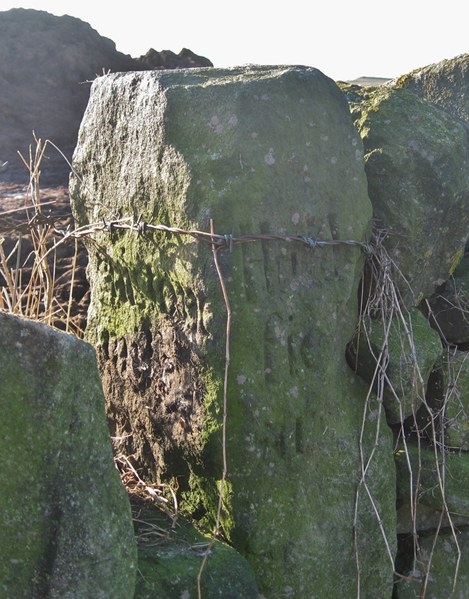 eld.
eld.
Crump then describes a route through Holmfirth, Hepworth, Maythorn and Thurlstone to Penistone, though some parts of it are possibly a bit speculative. The only other guide-stoop is on Thurlstone Moor, on the un-made-up High Bank Lane (grid ref approx SE219038), directing to Holmfirth, Huddersfield and Penistone – again in a very poor condition (pictured, right).
There is a stone just inside the grounds of Holmfirth High School (Heys Road, grid ref SE151097) which looks like a guide-stoop, but whatever markings it may have had have been erased. Though not on Crump’s route it is not far from the old crossing of the River Holme at Thongsbridge and could possibly be connected.
And finally, this being about the Maythorn Way, mention should be made of the Maythorne Cross, which has been the subject of legal disputes in recent years. Thought to have originally been a Saxon boundary marker, there are now two Maythorne Crosses, neither particularly original: one in Holmfirth by the river, near the main car-park (grid ref SE144084); the other in a field near its original location near the hamlets of Victoria and Maythorn.
RWH/April 2015


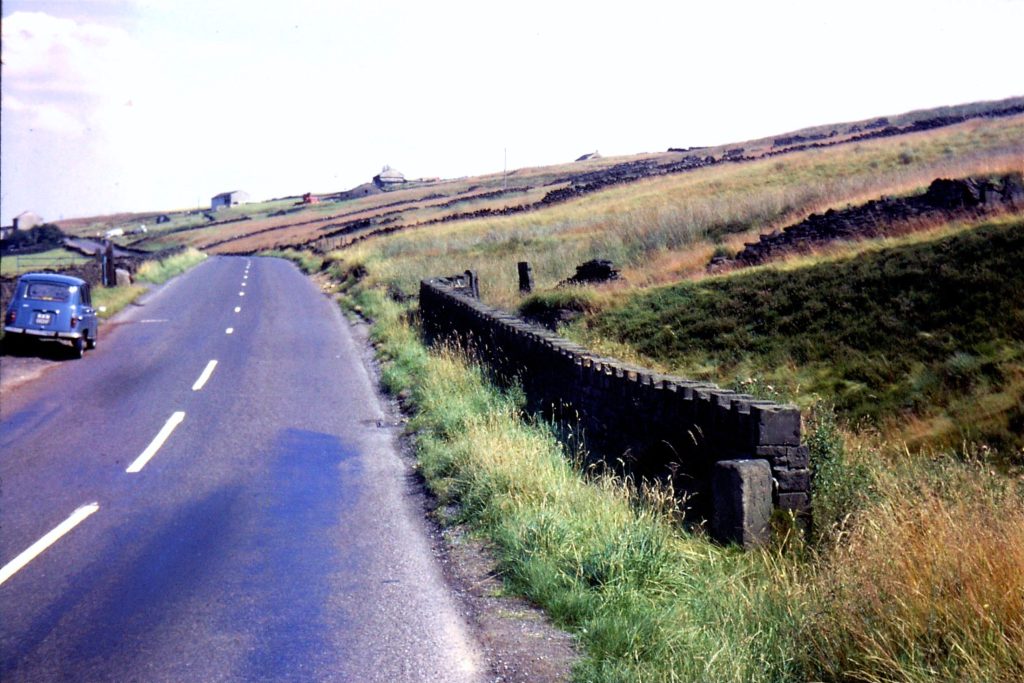
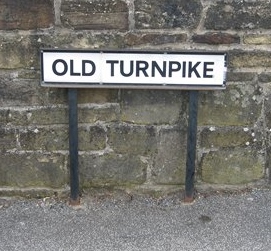
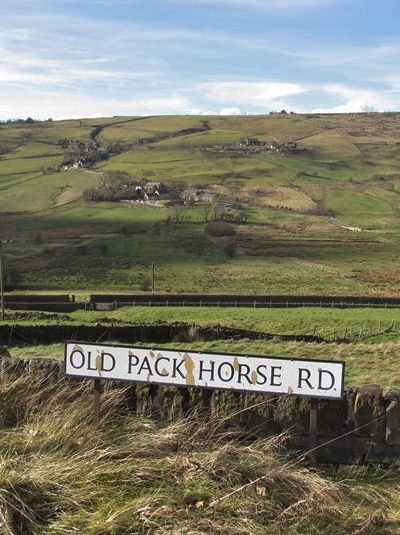
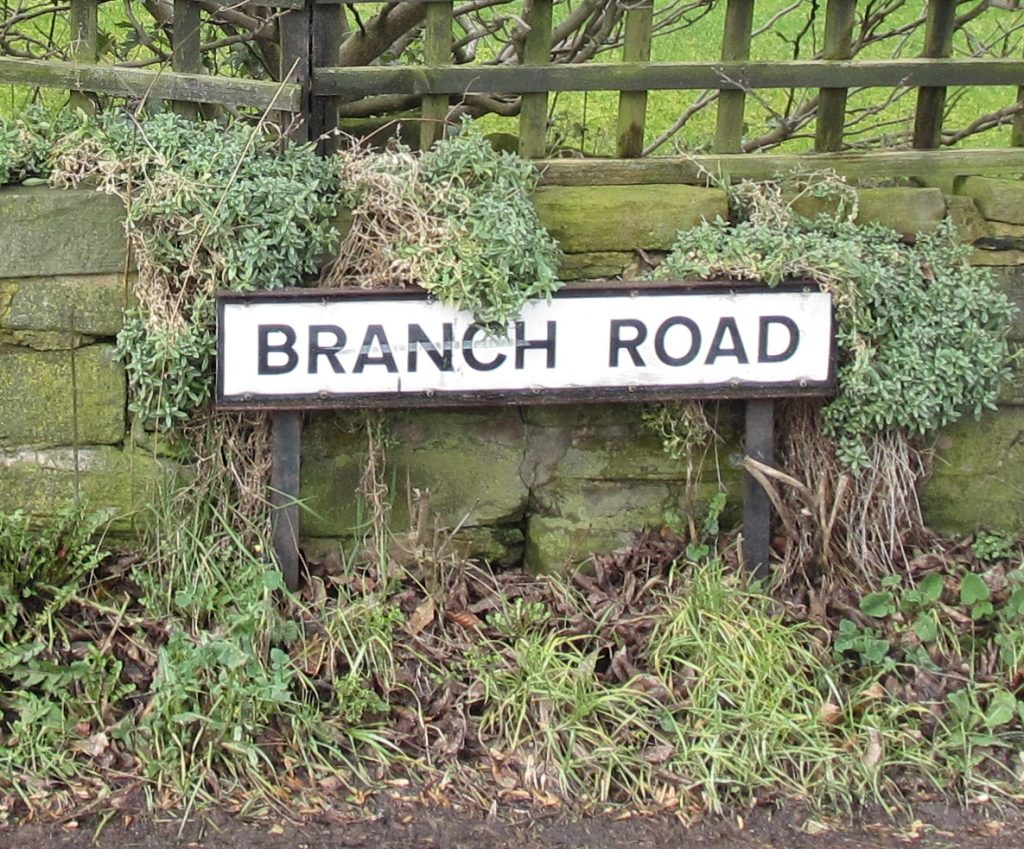
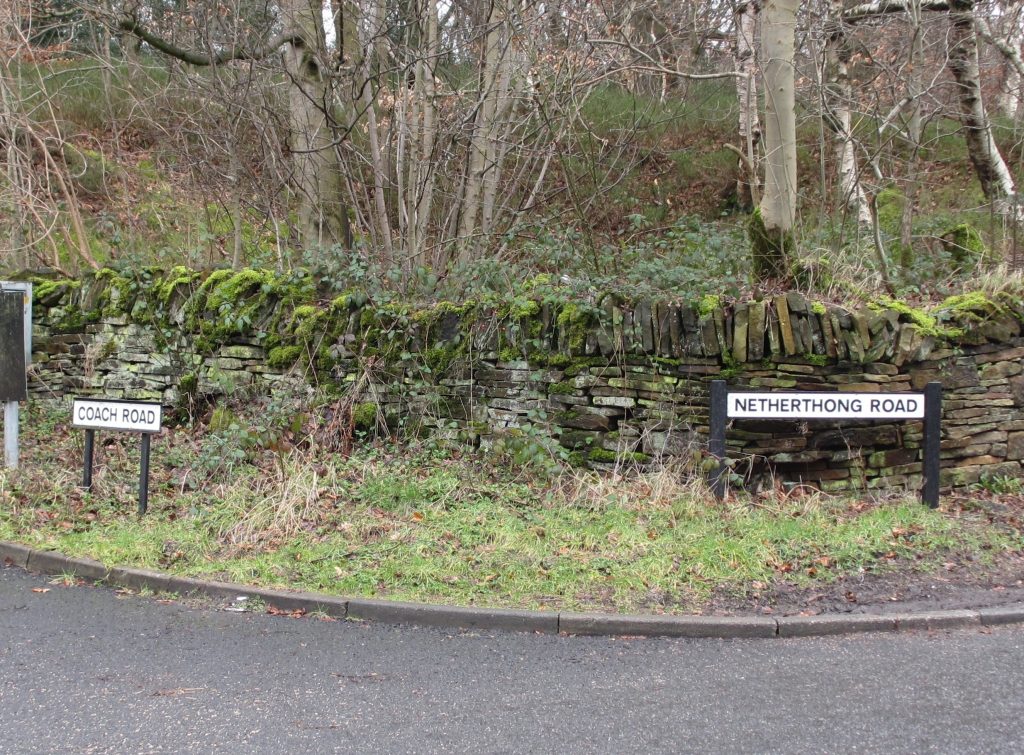
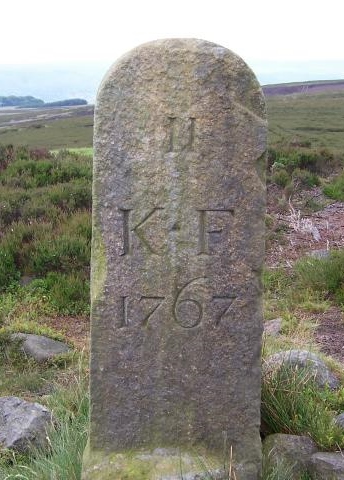

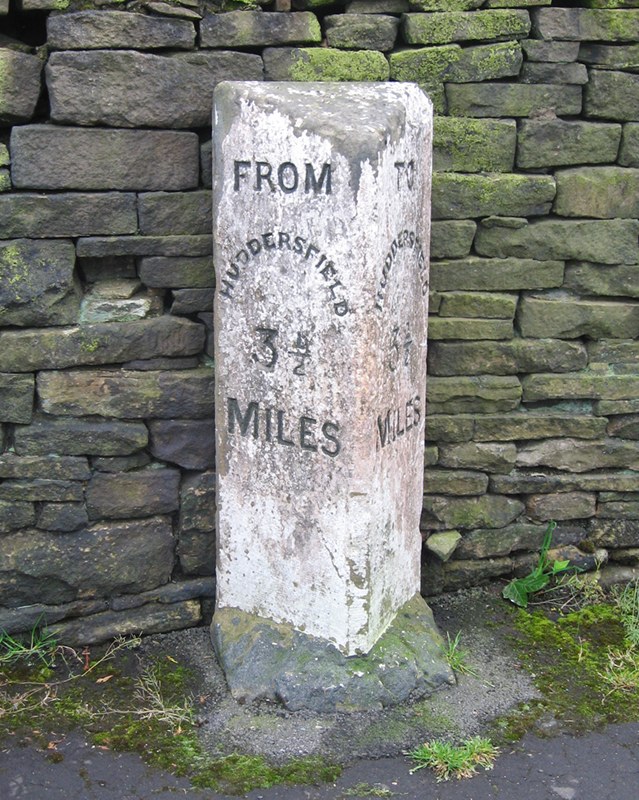
 Apart from Stott Hall Farm, nothing stood in the way of the builders of the M62 trans-Pennine motorway as it made its way over the moors and peat-bogs of Rishworth and Scammonden in 1969 – certainly not the old milestone at Outlane informing drivers (and originally cab-passengers) that they were 3½ miles from Huddersfield.
Apart from Stott Hall Farm, nothing stood in the way of the builders of the M62 trans-Pennine motorway as it made its way over the moors and peat-bogs of Rishworth and Scammonden in 1969 – certainly not the old milestone at Outlane informing drivers (and originally cab-passengers) that they were 3½ miles from Huddersfield.

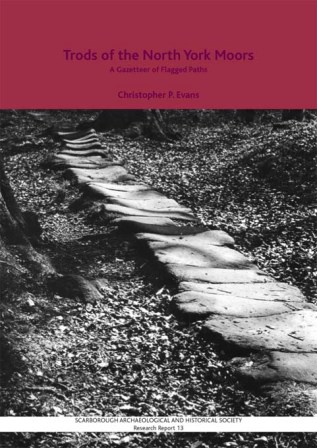
 A trod, according to the OED, is a dialect word for a trodden way, a footpath, path, or way. Brockett’s Glossary of North Country Words in Use of 1825 describes it as a foot path through a field.
A trod, according to the OED, is a dialect word for a trodden way, a footpath, path, or way. Brockett’s Glossary of North Country Words in Use of 1825 describes it as a foot path through a field. 
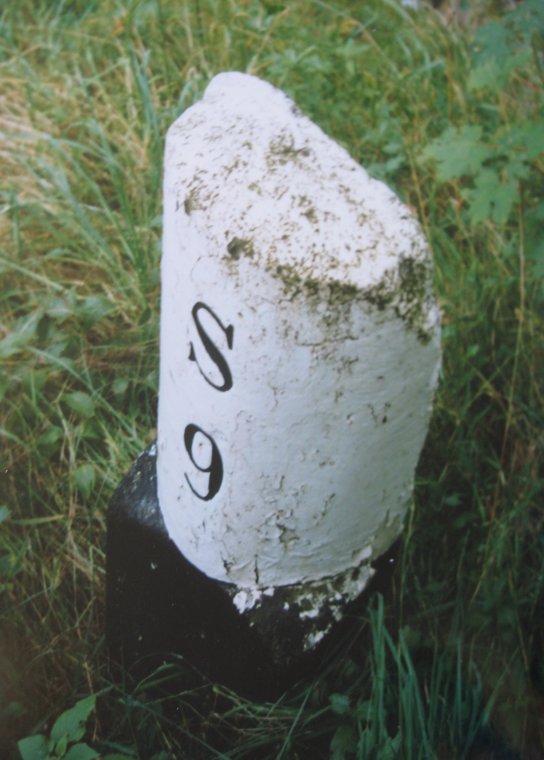
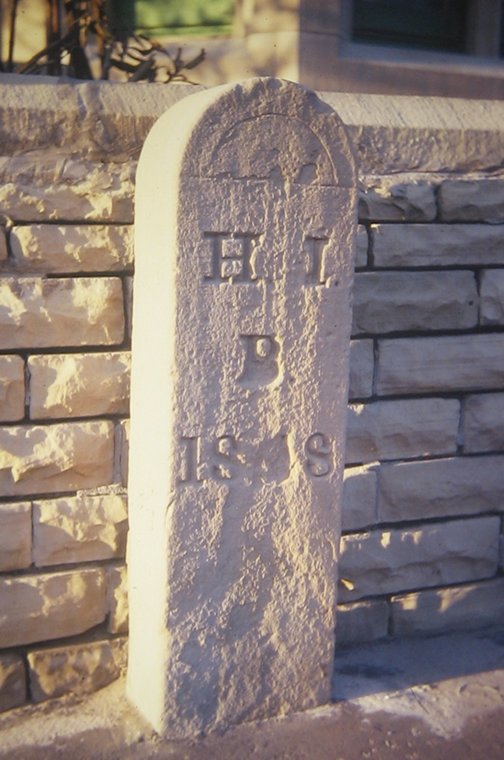

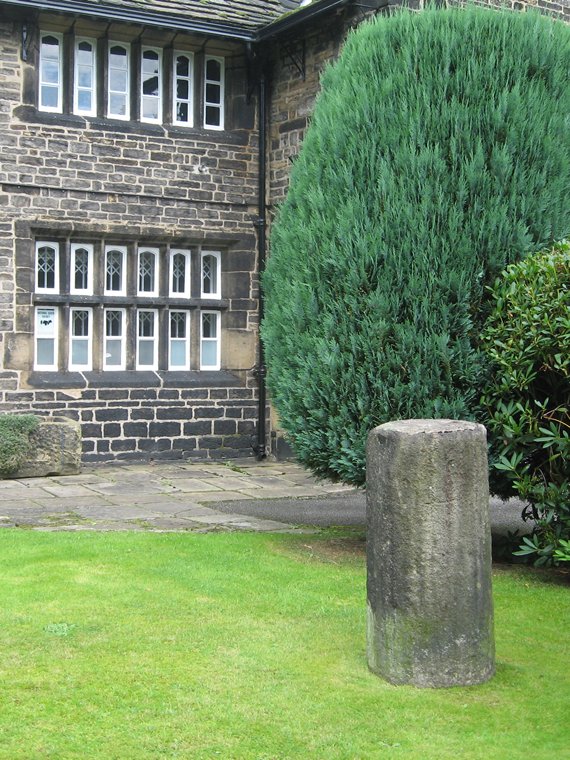
 In the 16th century a stone was found in Booth Bank Clough, between Slaithwaite and Marsden, one of the little streams that drops down into the River Colne. It was set up, in 1587, in the grounds of Slaithwaite Manor House, and became known as the Dial or Dyall Stone. Despite having been taken, for some unknown reason, to the Isle of Man in the 19th century, and later re-sited outside Slaithwaite Town Hall on Lewisham Road, it can still be seen at the Manor House, off Nabbs Lane in the centre of Slaithwaite.
In the 16th century a stone was found in Booth Bank Clough, between Slaithwaite and Marsden, one of the little streams that drops down into the River Colne. It was set up, in 1587, in the grounds of Slaithwaite Manor House, and became known as the Dial or Dyall Stone. Despite having been taken, for some unknown reason, to the Isle of Man in the 19th century, and later re-sited outside Slaithwaite Town Hall on Lewisham Road, it can still be seen at the Manor House, off Nabbs Lane in the centre of Slaithwaite.
 One of the most unusual guide-stoops in the county can be found just off the A616 Stocksbridge bypass in South Yorkshire: it is, as far as we know, unique in having six sides.
One of the most unusual guide-stoops in the county can be found just off the A616 Stocksbridge bypass in South Yorkshire: it is, as far as we know, unique in having six sides.